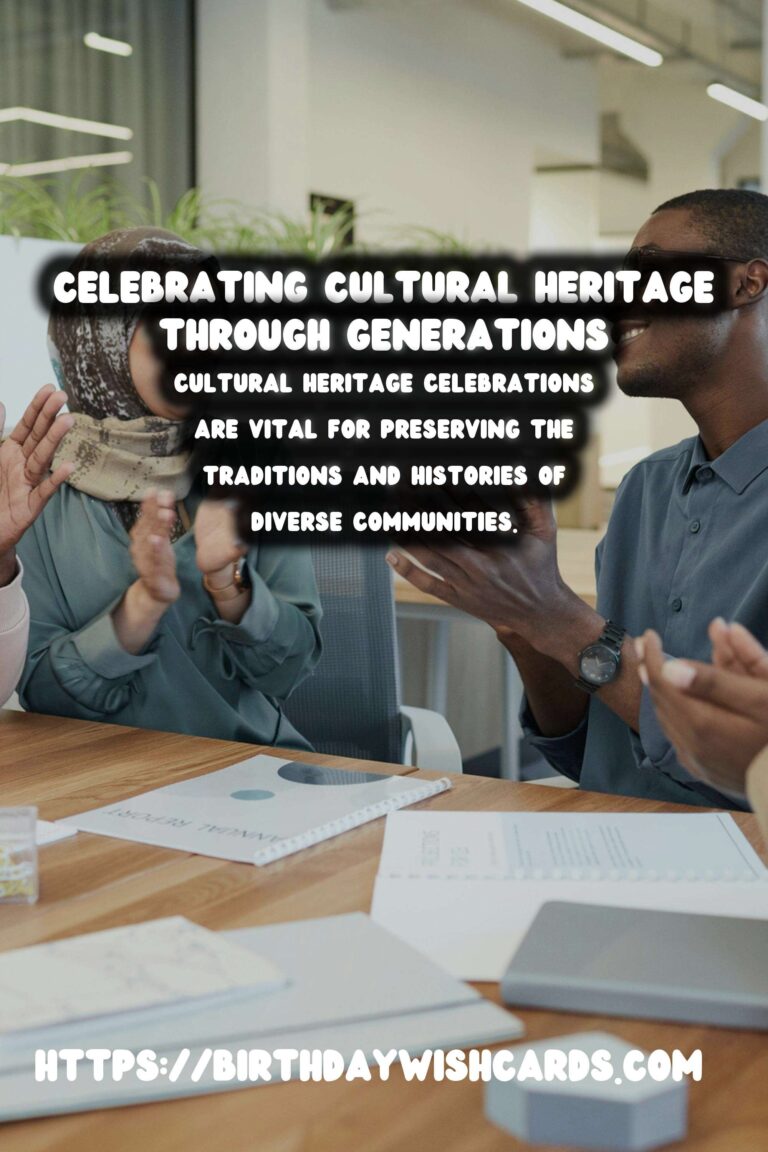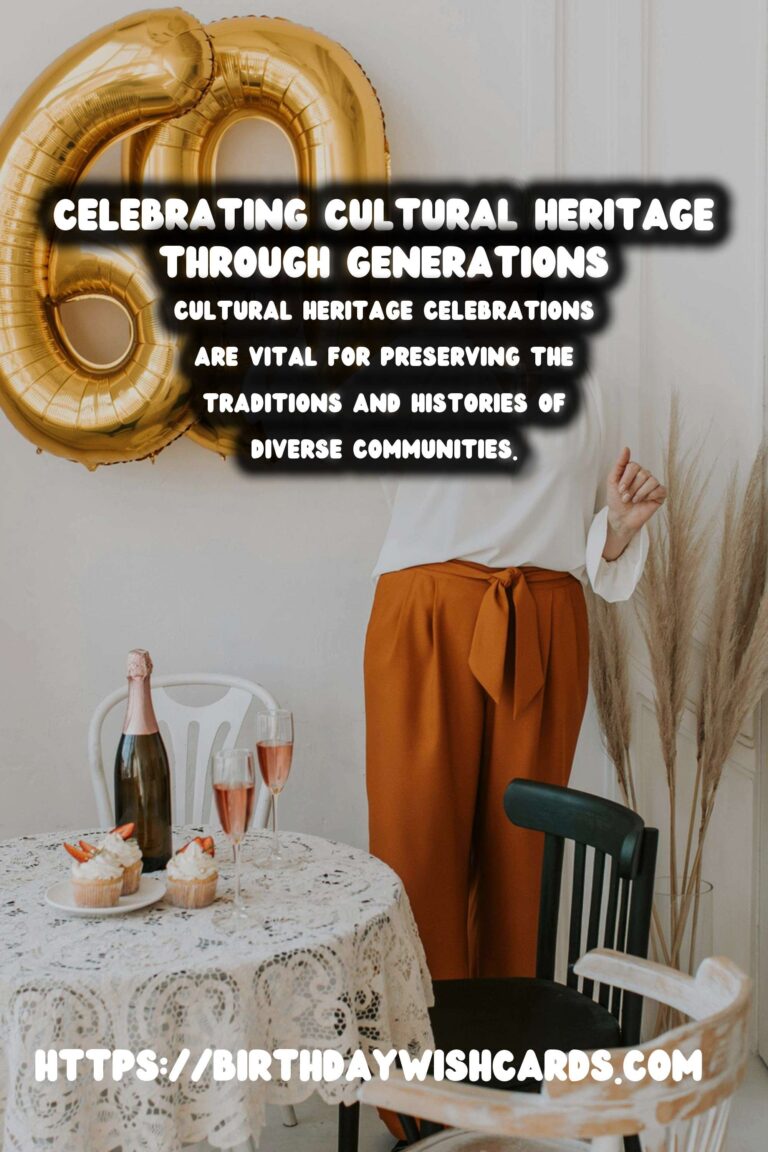
Cultural heritage celebrations are vital for preserving the traditions and histories of diverse communities. They foster understanding, unity, and pride among participants of all ages. Designing these celebrations requires careful consideration of what engages people while respecting the cultural significance of the events. In this article, we will explore effective tips for creating meaningful cultural heritage celebrations suitable for every age group.
Understanding Cultural Heritage
Cultural heritage encompasses the traditions, practices, languages, and artifacts of a community. It’s essential to recognize that these aspects are not only part of the past but continue to shape identities today. Engaging individuals of all ages in cultural heritage celebrations allows for the transmission of knowledge and values across generations.
Importance of Tailoring Celebrations
Every age group has unique preferences, interests, and learning styles. By tailoring activities and content to different age brackets, organizers can ensure higher participation rates and create more impactful experiences. This approach respects the diverse ways in which people connect with cultural heritage.
Tips for Celebrating Cultural Heritage by Age Group
1. Children (Ages 0-12)
Children are curious and love hands-on experiences. Here are some tips to engage them:
- Interactive Workshops: Organize art, music, or dance workshops that allow children to explore cultural traditions actively.
- Storytelling Sessions: Incorporate storytelling sessions where elders share captivating tales about the culture and its history.
- Cultural Arts and Crafts: Set up craft stations where kids can create culturally significant arts and crafts, fostering creativity while learning about their heritage.
2. Teens (Ages 13-19)
Teens seek independence and self-expression. Captivate them with these activities:
- Social Media Challenges: Encourage teens to participate in cultural heritage challenges online, sharing their experiences with hashtags.
- Community Service Projects: Organize projects that allow teens to engage directly with their culture by serving their community.
- Cultural Talent Shows: Host talent shows where teens can showcase their skills in music, dance, or spoken word related to their heritage.
3. Young Adults (Ages 20-35)
Young adults tend to seek depth and connection. Here are ways to engage them:
- Workshops and Seminars: Provide in-depth workshops focusing on cultural techniques, such as traditional cooking classes or folk dance lessons.
- Collaborative Events: Encourage young adults to collaborate with older generations in planning events, blending fresh ideas with traditional practices.
- Cultural Exchange Programs: Promote exchanges where young adults can learn about neighboring cultures and share their own.
4. Adults (Ages 36-60)
Adults appreciate meaningful engagement with cultural heritage. Consider these options:
- Documentary Screenings: Screen documentaries addressing relevant cultural issues, followed by engaging discussions.
- Culinary Experiences: Organize food festivals that celebrate traditional dishes, providing culinary history and recipes.
- Heritage Trails: Create guided tours that explore historically significant sites, offering narratives about their importance.
5. Seniors (Ages 60 and Above)
Seniors have a wealth of knowledge and experience. Engage them through:
- Memory Sharing Circles: Foster interactive sessions where seniors can share their life experiences and cultural stories.
- Cultural Reenactments: Organize events that mimic historical events or traditions, allowing seniors to participate as guides or performers.
- Art Exhibits: Showcase artwork created by seniors that reflects their cultural perspectives, celebrating both their heritage and creativity.
Creating a Welcoming Environment
It’s essential to create an environment where everyone feels welcome and included. Here are some tips:
- Accessibility: Ensure the celebration venue is accessible to people with disabilities, providing appropriate accommodations.
- Multilingual Resources: Offer materials and activities in multiple languages to cater to diverse communities.
- Community Collaboration: Partner with local organizations to enhance your reach and resources for planning the celebration.
Promoting Your Cultural Heritage Celebration
Once you’ve planned an engaging cultural heritage celebration, it’s crucial to promote it effectively. Here are some strategies:
- Social Media Campaigns: Use platforms like Facebook, Instagram, and Twitter to share teasers about the celebrations, featuring stories from community members.
- Local Press Releases: Engage local newspapers, radio stations, and community bulletins to announce the event.
- Community Flyers: Distribute colorful flyers in community centers, schools, and libraries to reach target demographics.
Conclusion
Planning a cultural heritage celebration that resonates across age groups requires careful thought and consideration. By recognizing the unique interests and preferences of each age range, you can create an event that fosters appreciation and understanding of cultural heritage. Remember, these celebrations are not just events but opportunities to weave the fabric of community together.
Cultural heritage celebrations are vital for preserving the traditions and histories of diverse communities. Understanding cultural heritage allows us to recognize the continuing significance of traditions.

